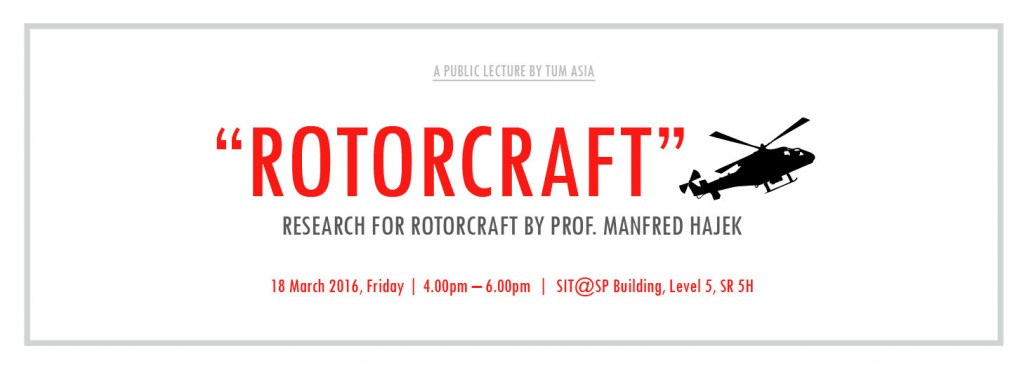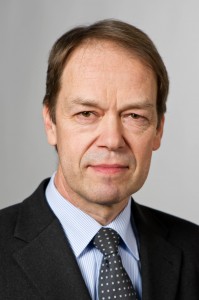
18 March 2016, Friday
4PM to 6PM
SIT@SP Building, Level 5, SR 5H (Address & directions here)
ABSTRACT OF TOPIC
Rotorcraft offer research opportunities for many engineering disciplines: aerodynamics, flight dynamics and stability, structural mechanics, or systems engineering. Phenomena of helicopter flight like dynamic stall at the retreating blade, rotor-rotor interactions, or strong non-linearities require sophisticated modelling approaches. Taking the pilot into the loop, however, needs more than models – it requires a high-fidelity simulation environment with adequate vision system and cockpit.
The Institute of Helicopter Technology at the Technical University of Munich (TUM) has its research focus on rotor aerodynamics, flight simulation, pilot assistance, but also configuration studies and sizing of rotorcraft. Some recent results from current research projects will be presented in this public lecture, like high-altitude drones, flight in low visibility, or rotor flow phenomena.
MORE ON PROFESSOR MANFRED HAJEK
 Prof. Hajek (b. 1956) has been head of the EADS Chair of Helicopter Technology since its creation in March 2010. The three cornerstones of the Chair’s research are safety, environmental acceptance and efficiency. In engineering terms, the focus is placed on modeling aeromechanical phenomena, the dynamic behavior of helicopter subsystems and overall design optimization.
Prof. Hajek (b. 1956) has been head of the EADS Chair of Helicopter Technology since its creation in March 2010. The three cornerstones of the Chair’s research are safety, environmental acceptance and efficiency. In engineering terms, the focus is placed on modeling aeromechanical phenomena, the dynamic behavior of helicopter subsystems and overall design optimization.
After studying mechanical engineering at TUM and completing his doctorate at TUM’s Chair B for Mechanics (1989), he became involved in helicopter development. From 1998 to 2006, he was responsible for Eurocopter Deutschland’s research & development activities. His research was centered on active noise reduction and optoelectronic helicopter flight control. In 2006, he joined Airbus and became one of its top executives, overseeing fuselage development among other things.
